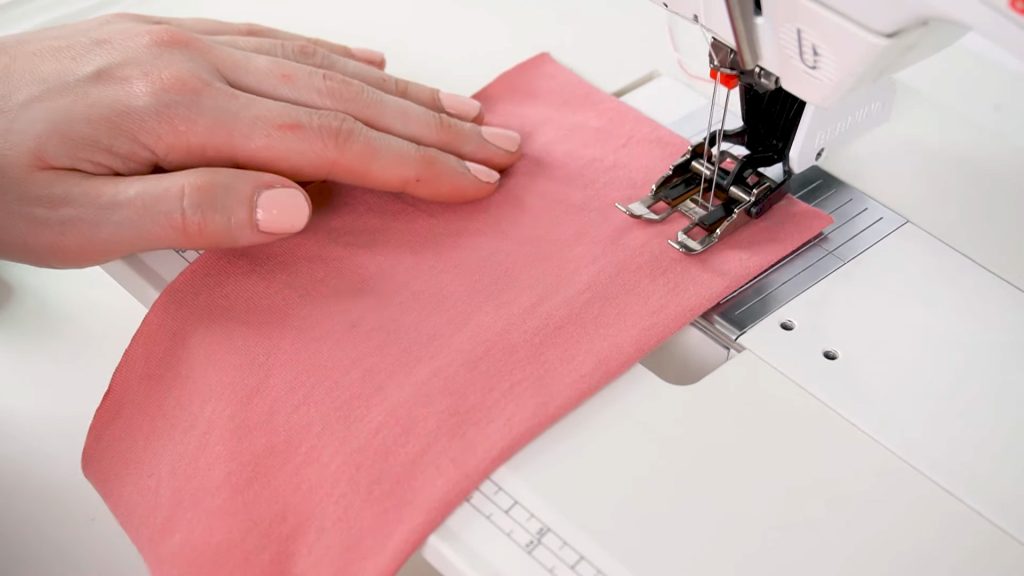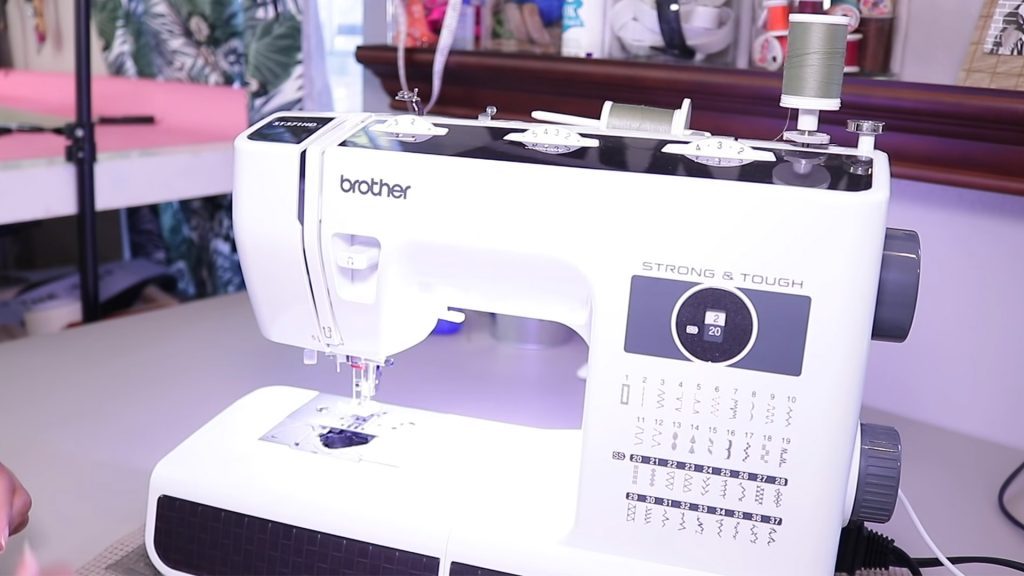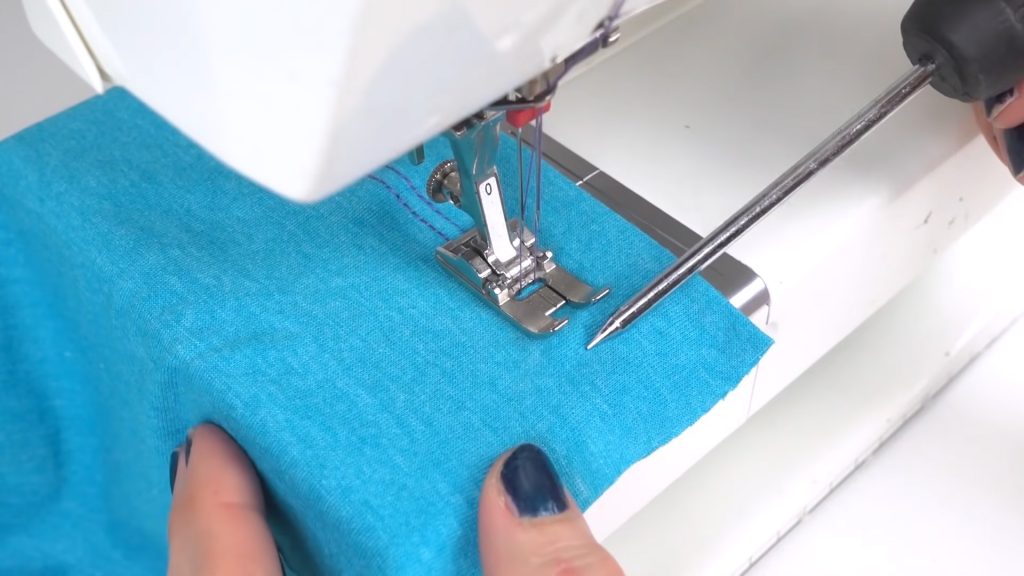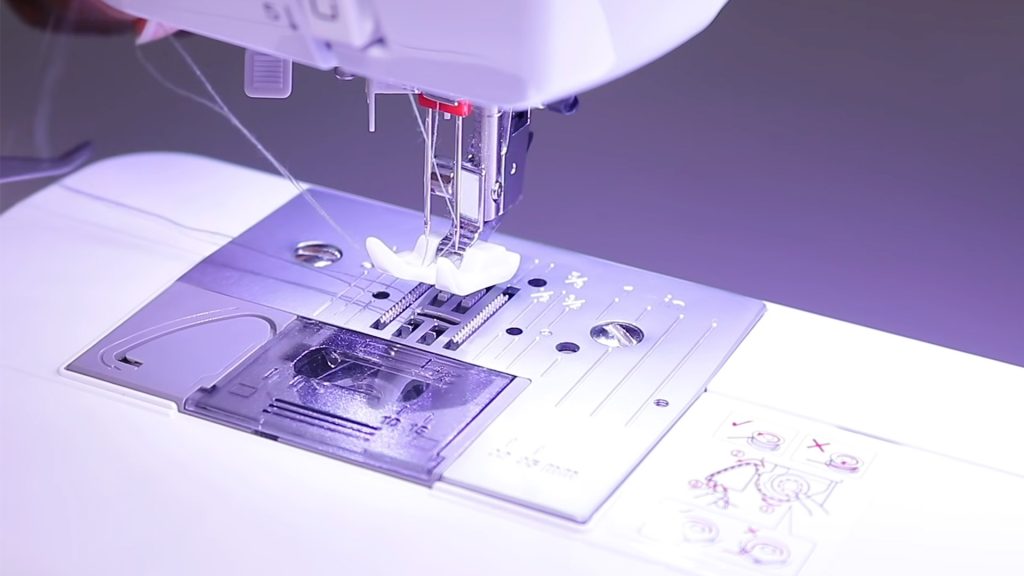Sewing is a creative and rewarding hobby, but to truly elevate your craft, you’ll want to explore different techniques and tools. One such tool that can add finesse and flair to your sewing projects is the twin needle.
Whether you’re a seasoned seamstress or a novice with a passion for crafting, mastering the twin needle can open up a world of possibilities in the world of sewing.
In this comprehensive guide, we will discuss how to use a twin needle. From understanding its components to setting up your sewing machine and creating stunning double-stitched hems and decorative patterns, we’ve got you covered.
Whether you plan to use a twin needle for hemming garments, adding decorative topstitching, or creating professional-looking finishes, this tutorial will equip you with the knowledge and confidence to achieve impeccable results.

How to Use a Twin Needle?
Using a twin needle in sewing is simple and versatile Choose a compatible twin needle size for your project. Thread your sewing machine with two threads of the same color.
Set your machine to the straight stitch and ensure the needle position is centered. Replace your regular needle with the twin needle, tightening it securely.
Stitch on a scrap piece to ensure proper tension and alignment. Place your fabric under the presser foot, sew slowly, and enjoy the beautifully parallel stitches. Here’s a step-by-step guide on how to use a twin needle for sewing:
Choose the Right Twin Needle
Select a twin needle with the desired needle width, usually indicated on the packaging (e.g., 2.0mm, 4.0mm). Ensure your sewing machine’s needle clamp can accommodate a twin needle. Gather all the other necessary tools for sewing as well.
Thread Your Machine
Thread your sewing machine as usual, following your machine’s threading instructions. Use two separate spools of thread, one for each needle. Carefully remove the regular sewing needle from your machine. Insert the twin needle into the needle clamp, ensuring both needles are fully seated.
Adjust Tension Settings
Check your sewing machine’s manual for recommended tension settings. Typically, you may need to slightly reduce the upper thread tension to prevent puckering. Before starting your project, practice on a scrap piece of fabric to ensure your machine is set up correctly.
Sew Your Project
Place your fabric under the presser foot, ensuring the twin needle is aligned with your desired stitching line. Sew at a slow to moderate speed, guiding the fabric evenly.
The twin needle will create parallel stitches on the front and a zigzag or connecting stitch on the back, securing both lines of stitching.
Finish and Secure the Threads
When you reach the end of your seam, leave a few inches of thread tails. Tie a knot or backstitch to secure the threads and trim any excess. Twin needles are great for creating decorative topstitching. Try different stitch widths and lengths to achieve various effects.
Final Tips
Always test your twin needle on scrap fabric before starting your project. Pay attention to your machine’s instructions and recommended settings for twin needle use. Have fun experimenting and adding a professional touch to your sewing projects!
Remember that practice makes perfect, so don’t be discouraged if your first attempts aren’t flawless. With time and experience, you’ll become more skilled at using a twin needle for a variety of sewing projects.
Can Any Machine Use a Twin Needle?

Not every sewing machine can use a twin needle. Whether your sewing machine can use a twin needle depends on its specific features and capabilities. Here are some factors to consider:
Needle Clamp and Tension Adjustment
Your sewing machine must have a needle clamp that can hold two needles side by side. Most modern sewing machines have a standard needle clamp that can accommodate a twin needle.
Some machines may require tension adjustments when using a twin needle. Check your sewing machine’s manual for recommended tension settings.
Zigzag Stitch Capability
A twin needle creates two rows of stitches on the top side of the fabric and a zigzag or connecting stitch on the underside to secure those rows. Therefore, your sewing machine should have the capability to do a zigzag stitch.
Needle Width
Ensure that your machine’s needle plate and presser foot can accommodate the width of the twin needle you plan to use. Twin needles come in various widths, and not all machines can accommodate wider ones.
Threading
Threading a twin needle may differ from threading a single needle. Your sewing machine’s manual should provide instructions on how to thread a twin needle properly.
Bobbin Compatibility
Make sure your sewing machine’s bobbin can handle the double threads that result from using a twin needle. It’s essential to consult your sewing machine’s manual for specific guidance on using a twin needle.
If you’re unsure whether your machine is compatible, you can contact the manufacturer or a sewing machine technician for assistance. Using a twin needle on an incompatible machine could lead to issues like broken needles or thread jams.
Why Use a Twin Needle?

Using a twin needle in sewing offers several advantages and creative possibilities. It’s a valuable tool for both beginners and experienced sewers looking to elevate their sewing skills and add unique touches to their creations. Here are its uses:
Professional-Looking Hems
Twin needles create two parallel rows of stitching on the top side of your fabric and a zigzag or connecting stitch on the underside. This results in neat, even hems that resemble those found on store-bought garments.
Decorative Topstitching
You can achieve beautiful decorative effects with twin needles. They come in various widths and can be used to create intricate topstitching, adding a touch of elegance to your projects.
Elasticity in Knits
When working with knit fabrics, twin needles allow your seams to maintain stretchability, making them ideal for sewing stretchy garments like t-shirts and leggings.
Time Efficiency and Strengthening Seams
Twin needles can save time, as they simultaneously create two rows of stitches, allowing you to complete hems and seams faster than with a single needle.
Twin needle stitching reinforces seams, making them more durable, especially for fabrics that endure stress, like knits and stretchy materials.
Variety of Effects
By experimenting with different twin needle widths and stitch types, you can achieve various decorative effects, including pintucks, parallel rows of stitching, and more.
Versatility
Twin needles are versatile and suitable for a wide range of sewing projects, from clothing and home decor to quilting and crafts. Overall, using a twin needle enhances the quality and appearance of your sewing projects, giving them a professional finish.
How Do You Read a Twin Needle Size?

Reading a twin needle size is relatively straightforward. Twin needle sizes are typically indicated on the packaging or label of the needle.
You’ll usually see the size expressed as two numbers separated by a forward slash (e.g., 2.0/80). Here’s how to interpret these numbers:
First Number (Width)
The first number represents the distance between the two needles on the twin needle. It indicates how far apart the two needles are from each other, measured in millimeters.
For example, in a 2.0/80 twin needle, the first number, “2.0,” indicates that the needles are 2.0 millimeters apart. This number determines the width of the stitching lines created by the twin needles.
Second Number (Needle Size)
The second number represents the size of each individual needle in the twin needle set. It is usually expressed in metric sizing (e.g., 80, 90, 100).
This number corresponds to the diameter and thickness of the needle shaft. In a 2.0/80 twin needle, the second number, “80,” indicates the size of each needle in the set.
So, when you see a twin needle labeled as “2.0/80,” you can understand that it has two needles positioned 2.0 millimeters apart, and each needle is size 80.
This information helps you select the appropriate twin needle for your sewing project based on the desired width and the type of fabric you plan to use.
FAQs
What is a twin needle?
A twin needle is a sewing machine needle with two-needle tips on a single shaft. It’s designed for creating parallel rows of stitching, commonly used for decorative hems, topstitching, and creating a professional finish on knit fabrics.
How do I insert a twin needle into my sewing machine?
To use a twin needle, you’ll need a sewing machine with two-needle slots. Insert each needle into its respective slot, making sure they’re secure. Thread your machine as you would for a single needle, but pass the thread through the two needle eyes separately.
Can I use a twin needle on any type of fabric?
Twin needles work best on medium-weight to heavyweight fabrics like jersey knits, interlock, and other stretch fabrics. They may not be suitable for lightweight or delicate fabrics as they can cause puckering or damage.
How do I adjust the stitch width when using a twin needle?
The width of the stitches when using a twin needle is determined by the distance between the two needle tips.
You can adjust this width on your sewing machine’s settings. Be sure to choose a stitch that accommodates the twin needle, usually labeled as a “double needle” or “twin needle” stitch.
Are there any special techniques for using a twin needle?
When using a twin needle, it’s important to sew at a slower speed, especially around curves or corners. Additionally, be mindful of the fabric’s tension. Some experimentation may be required to find the right tension settings for your specific fabric and machine.
Conclusion
Using a twin needle can take your sewing projects to the next level, providing a polished and professional finish to your creations.
We’ve explored the key steps to make the most of this versatile tool, from selecting the right needle size to adjusting your machine settings for the desired effect.
As you continue to practice and experiment with twin-needle sewing, remember that mastery comes with time and patience. Don’t be afraid to try new techniques and push your creative boundaries.
The twin needle allows you to add personal touches and intricate details to your garments, making each project uniquely yours.
So, as you embark on your journey of twin needle sewing, keep honing your skills, and soon you’ll be effortlessly incorporating this technique into your sewing repertoire.
With dedication and creativity, you’ll be amazed at the beautiful, professional-looking results you can achieve with a twin needle.
Leave a Reply